Key takeaways:
- Ocean conservation is vital for maintaining marine ecosystems, as the decline of one species can disrupt the entire environment.
- Underwater photography raises awareness about issues like coral bleaching and pollution, inspiring others to act for ocean preservation.
- Personal experiences, such as observing marine life and participating in conservation efforts, emphasize the urgency for protecting ocean health.
- Collective actions, such as reducing plastic use and participating in clean-up events, can lead to significant positive change for the oceans.
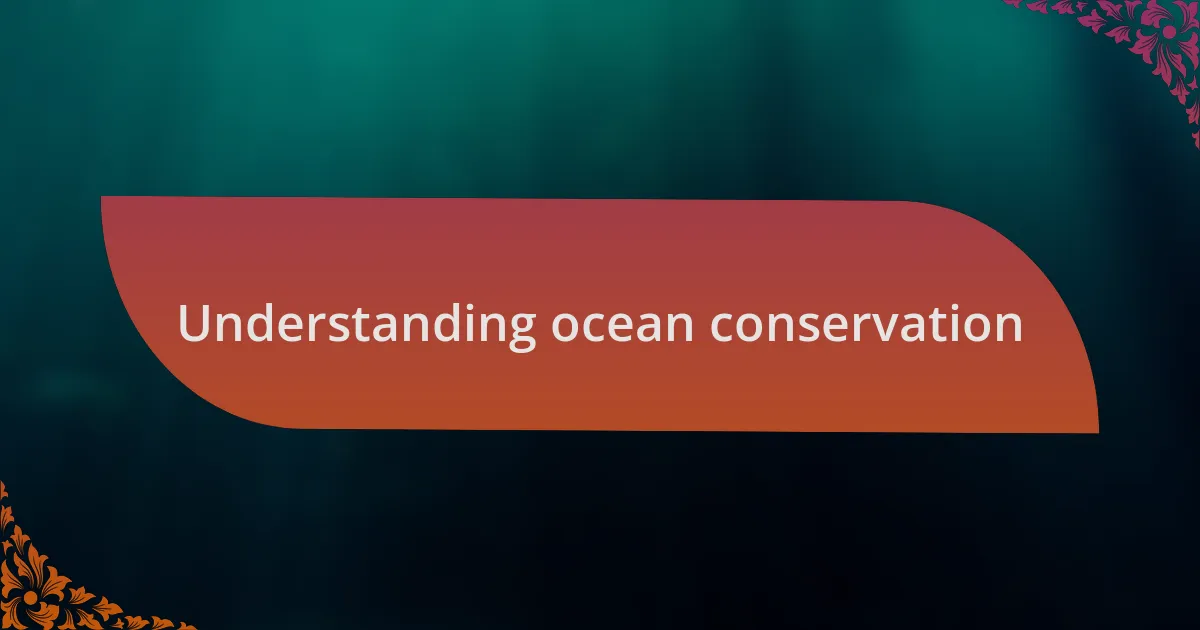
Understanding ocean conservation
Ocean conservation is about recognizing the intrinsic value of our oceans, which cover over 70% of our planet. I remember the first time I dove into a vibrant coral reef; it felt like stepping into a different world, teeming with life and beauty. This experience made me realize how crucial it is to protect these ecosystems from pollution and overfishing.
Why should we care about what happens beneath the waves? Each creature plays a role, and the decline of one species can disrupt the entire marine ecosystem. I once watched a documentary on the devastating effects of plastic pollution, and it struck a chord with me. Seeing turtles entangled in debris or mistaking plastic for food is heart-wrenching and highlights the pressing need for collective action.
Understanding ocean conservation means acknowledging that our actions on land have direct implications for marine life. When I started advocating for sustainable practices, I found that even small changes, like reducing single-use plastics, can lead to significant impacts. Isn’t it empowering to think that our daily decisions can contribute to something as vast and essential as the health of our oceans?
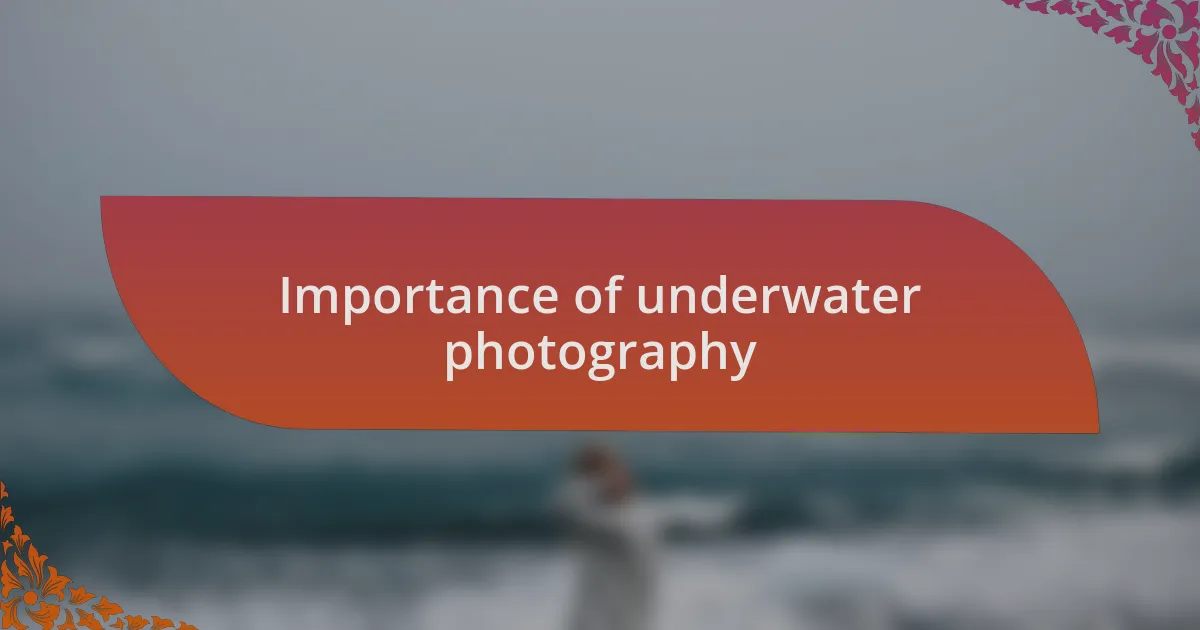
Importance of underwater photography
Underwater photography serves as a powerful tool for ocean conservation, capturing stunning visuals that reveal the beauty and fragility of marine ecosystems. I recall a moment while shooting anemones swaying in the gentle current; that vivid image not only filled me with a sense of wonder but also deepened my commitment to advocacy. Each photograph tells a story, showing the intricate relationships within coral reefs that many people may never experience firsthand.
Through underwater photography, we bring awareness to pressing issues like coral bleaching and habitat destruction. I vividly remember a photo I took of a bleached reef; the stark contrast of life and death was jarring. It struck me how crucial it is to showcase these scenes—how can we effectively advocate for change if people aren’t moved by the visual evidence of what we stand to lose?
Moreover, sharing these images can inspire others to take action. When I posted one of my underwater shots on social media, I was overwhelmed by the responses—many people were touched by the beauty and expressed a newfound interest in marine conservation. Isn’t it fascinating how a single photograph can spark curiosity and drive a community toward preservation? By sharing our underwater adventures, we foster a greater connection to the ocean, motivating others to join the cause.
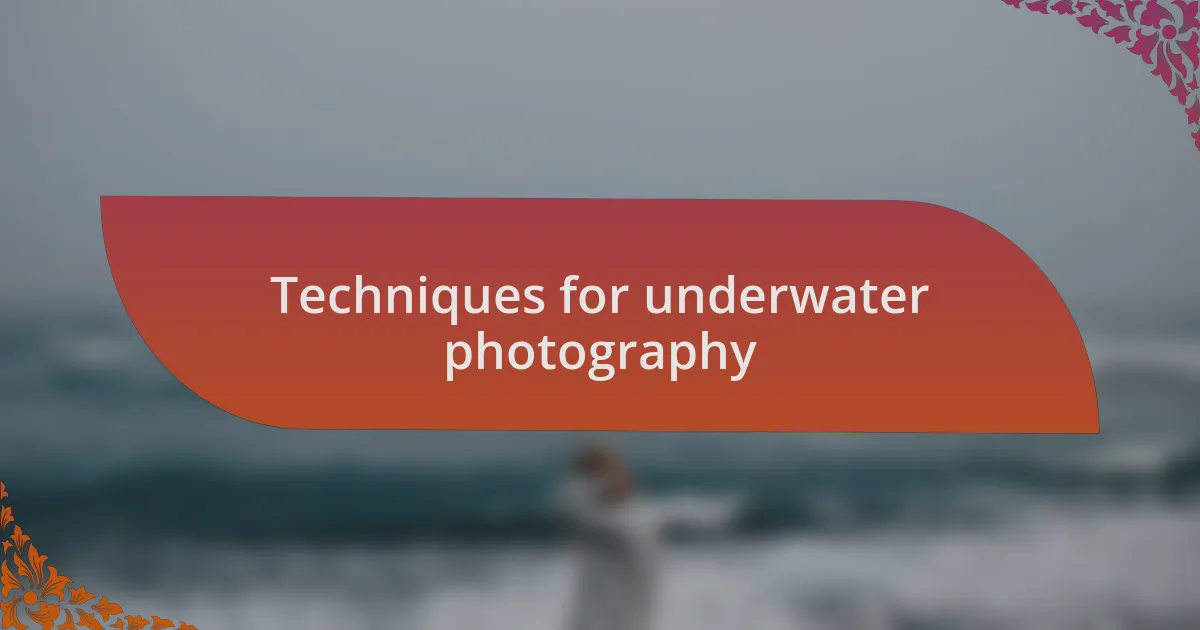
Techniques for underwater photography
When I first ventured beneath the waves, I quickly realized that lighting plays a pivotal role in underwater photography. The underwater environment absorbs colors at different rates, which means that reds and yellows can disappear within just a few feet. To combat this, I started using a flash or strobe to illuminate my subjects, dramatically enhancing the vibrancy of my images. Have you ever noticed how an ordinary scene can come alive with the right lighting?
Another technique I often employ is controlling my buoyancy. It’s a vital skill that enhances composition and stability while shooting. I remember floating effortlessly above a school of fish, adjusting my position to find the perfect angle. It was exhilarating! Good buoyancy helps avoid disturbing the marine life and the environment around me. Each small change in position opened up new perspectives—isn’t it amazing how your surroundings can transform with just a slight shift?
Finally, I always focus on the rule of thirds to create balanced, engaging compositions. By aligning my subject with one of the intersecting points, I find that my photos draw the viewer’s eye naturally. Once, while photographing a majestic sea turtle, positioning it at a third made the image feel dynamic and inviting. This composition technique not only enhances visual appeal but also encourages a deeper appreciation for marine life—how do you feel when artfully composed photographs tell a story?
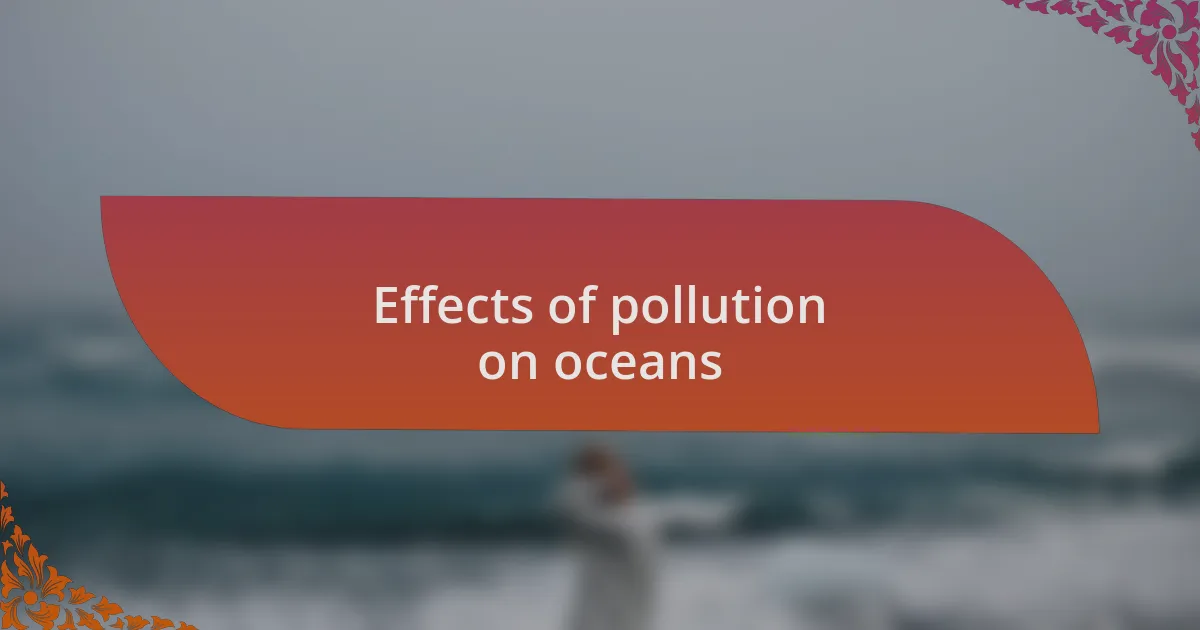
Effects of pollution on oceans
Pollution significantly impacts the health of our oceans, creating challenges that often feel overwhelming. During one of my dives, I was confronted by an unsightly plastic bag entangled in a vibrant coral reef. Observing the contrast between the coral’s beauty and the stark reality of plastic waste was a powerful reminder of how pollution disrupts marine ecosystems. Can you imagine the stress this creates for the fish and creatures that rely on these habitats?
The presence of chemicals in our waters also poses grave dangers. I once marveled at a stunning underwater landscape, only to later learn that runoff from nearby agriculture was contributing to harmful algal blooms. These blooms, often triggered by nutrient pollution, can deplete oxygen levels and suffocate marine life. It’s unsettling to think that such beauty can harbor threats that go unseen until it’s too late.
As I reflect on the impacts of pollution, it reinforces my belief in the urgent need for conservation. I recall a moment when I witnessed a group of divers pick up trash during a dive, and it struck me how collective actions, however small, can lead to significant change. Are we all ready to do our part in safeguarding these precious underwater worlds before they are irrevocably altered?
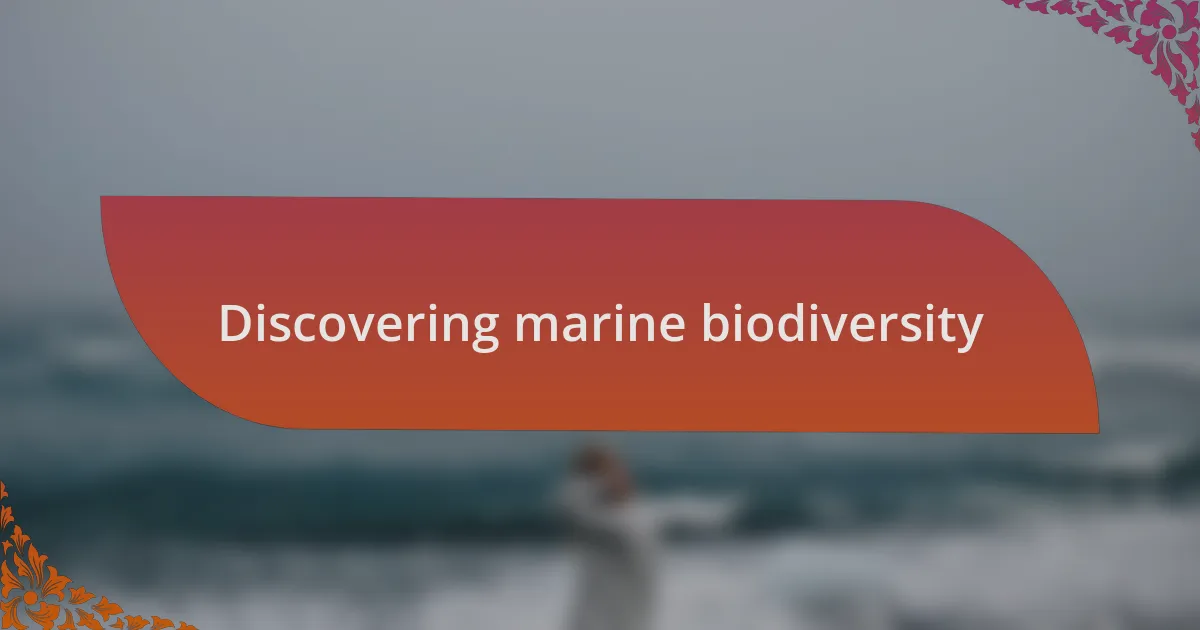
Discovering marine biodiversity
Discovering marine biodiversity is like stepping into a vibrant, living painting. During one of my more serene dives, I encountered an unexpected burst of color as a school of clownfish darted among the anemones. Their playful presence reminded me of how interconnected these ecosystems are and how each species, no matter how small, plays a vital role in maintaining balance. Isn’t it incredible to think about the secret lives of creatures we might never see or understand fully?
Every dive unveils hidden gems of biodiversity that surprise and captivate me. I recall swimming through a kelp forest, where the sunlight would filter through the leaves, revealing a world buzzing with life—sea urchins, starfish, and tiny shrimp all cohabitating in harmony. This experience made me ponder: what else lies beneath the surface, waiting to be discovered? The realization that we have barely scratched the surface of marine science fills me with both wonder and urgency.
Moreover, encountering rare species, such as the elusive Mola Mola, or sunfish, stirred a deep emotional connection. As I floated beside this gentle giant, I felt an overwhelming sense of responsibility to protect these creatures and their habitats. Each sighting serves as a reminder of the fragility of our oceans and the urgent call for greater awareness and action. How can we ignore the wonders that exist just below the waves, the very wonders we seem destined to lose if we don’t take action?
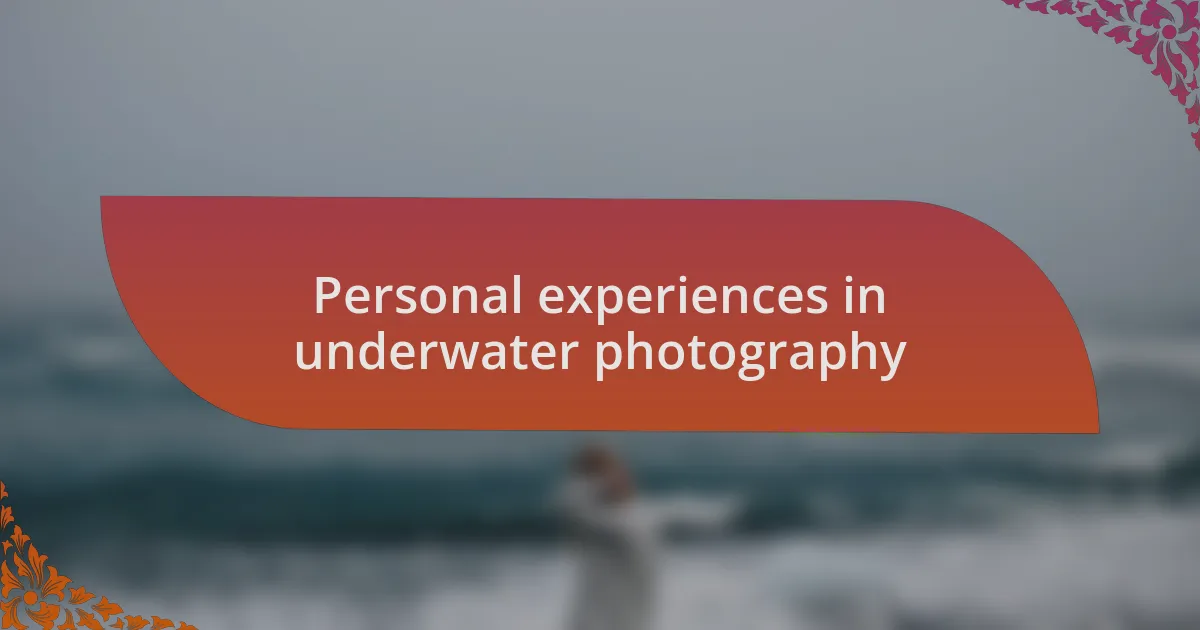
Personal experiences in underwater photography
One of my most memorable moments in underwater photography occurred while exploring a vibrant coral reef. I remember finding a shy seahorse nestled among the corals, almost camouflaged in its surroundings. As I gently adjusted my camera settings, my heart raced with excitement but also with a sense of responsibility—capturing this delicate creature felt like honoring its existence in such a fragile habitat.
During another dive, I witnessed a stunning ballet of marine life as a school of manta rays glided gracefully above me. The sheer size and elegance of these creatures left me in awe. I couldn’t help but wonder: how many people have the chance to experience such beauty? That moment reminded me of how vital it is to share these encounters with others to spark interest in ocean protection.
On a particularly adventurous outing, I set out to photograph the bioluminescent plankton under a moonless night. As I swam through the water, every movement left a trail of sparkling light, creating an otherworldly atmosphere. In that moment, I felt a deep connection to the environment—a reminder that we are part of something larger. How often do we get to experience such magic, and how much of it will we lose if we don’t take action to safeguard our oceans?
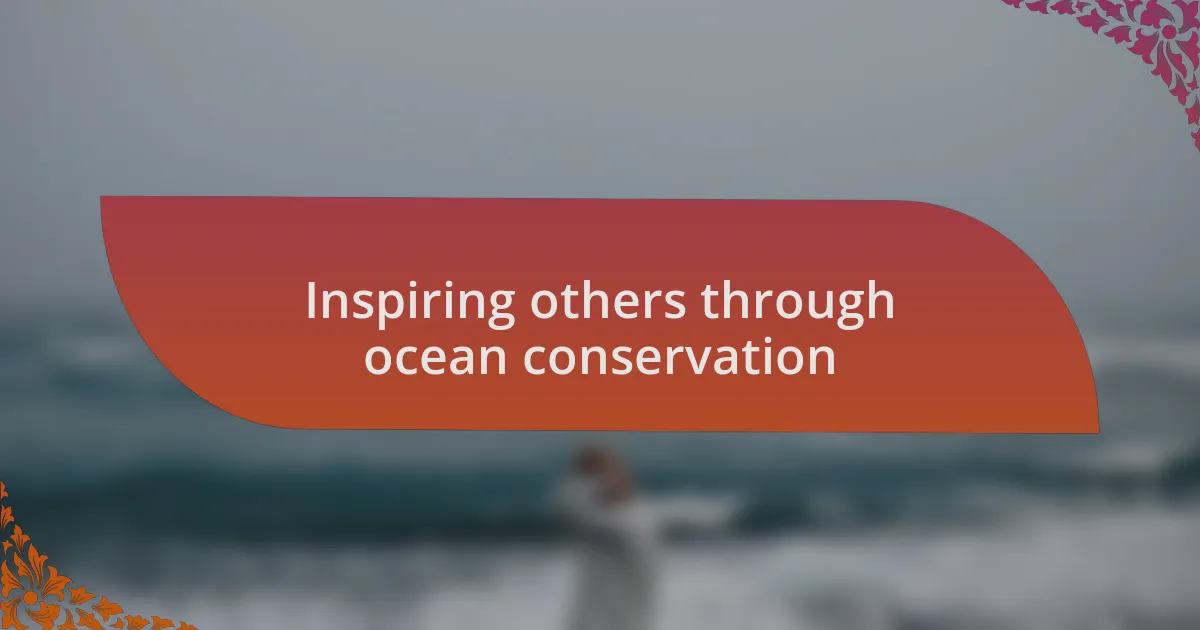
Inspiring others through ocean conservation
Seeing the impact of plastic pollution on marine life during a dive opened my eyes to a harsh reality. I encountered a sea turtle tangled in a discarded fishing net, struggling to swim. The moment made my heart ache, and it pushed me to speak passionately about the importance of reducing plastic use. How many sea creatures suffer silently because we choose convenience over conscience?
While editing images from my underwater expeditions, I often find myself reflecting on the sheer beauty of the ocean and its inhabitants. Each photograph has the power to tell a story and evoke deep emotions. I realize that sharing these visuals isn’t just about showcasing nature; it’s a call to action. Can a single image inspire someone to join the fight for cleaner oceans? I believe they can, and that’s why I keep sharing my experiences.
I’ve participated in beach clean-up events that connected me with others who are equally passionate about ocean conservation. It was invigorating to bond with fellow enthusiasts as we collected debris that could harm marine life. I saw firsthand how our small actions can create a ripple effect. What if everyone joined in? Imagine a community united for the ocean’s health, inspired to protect what we often take for granted.